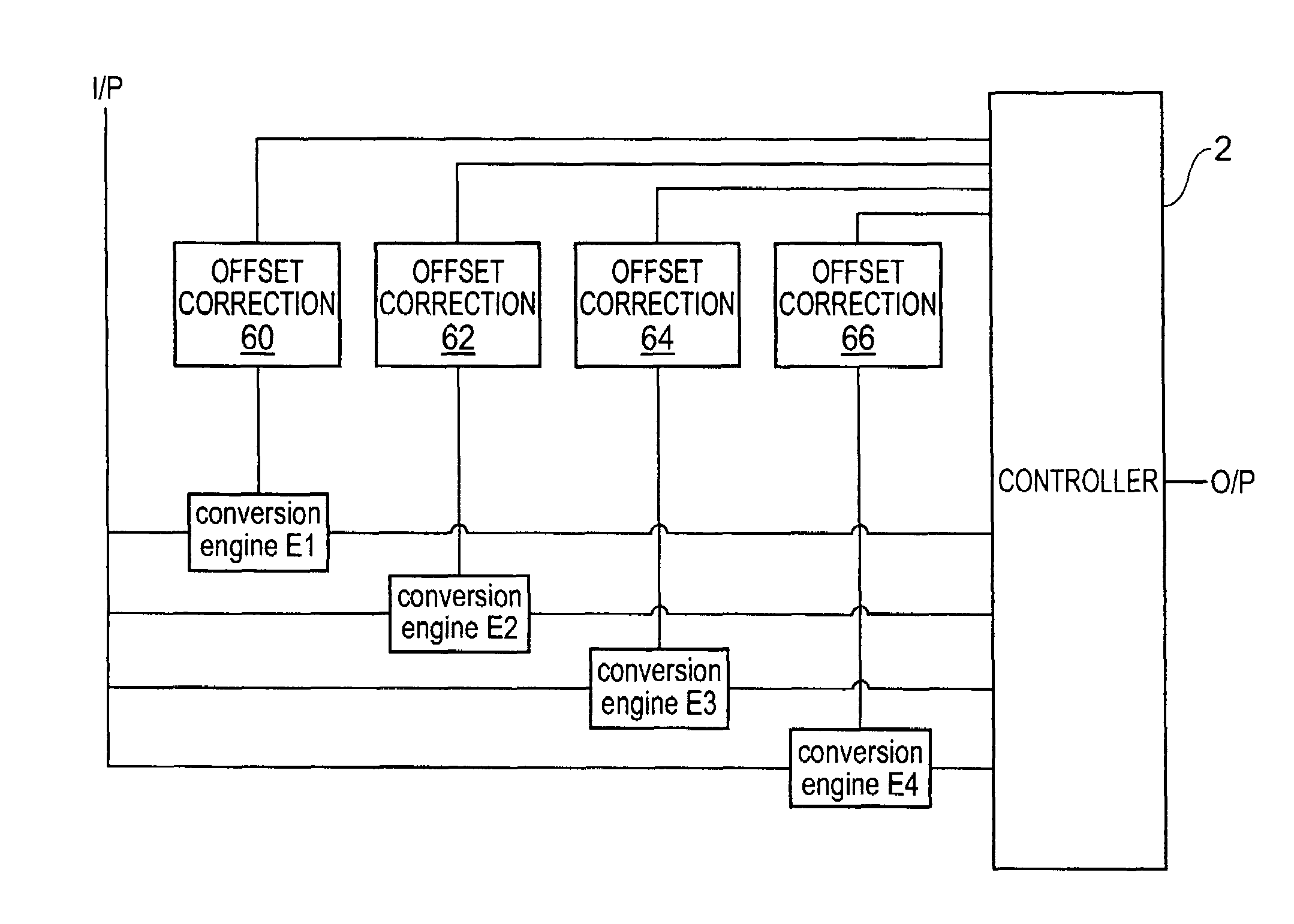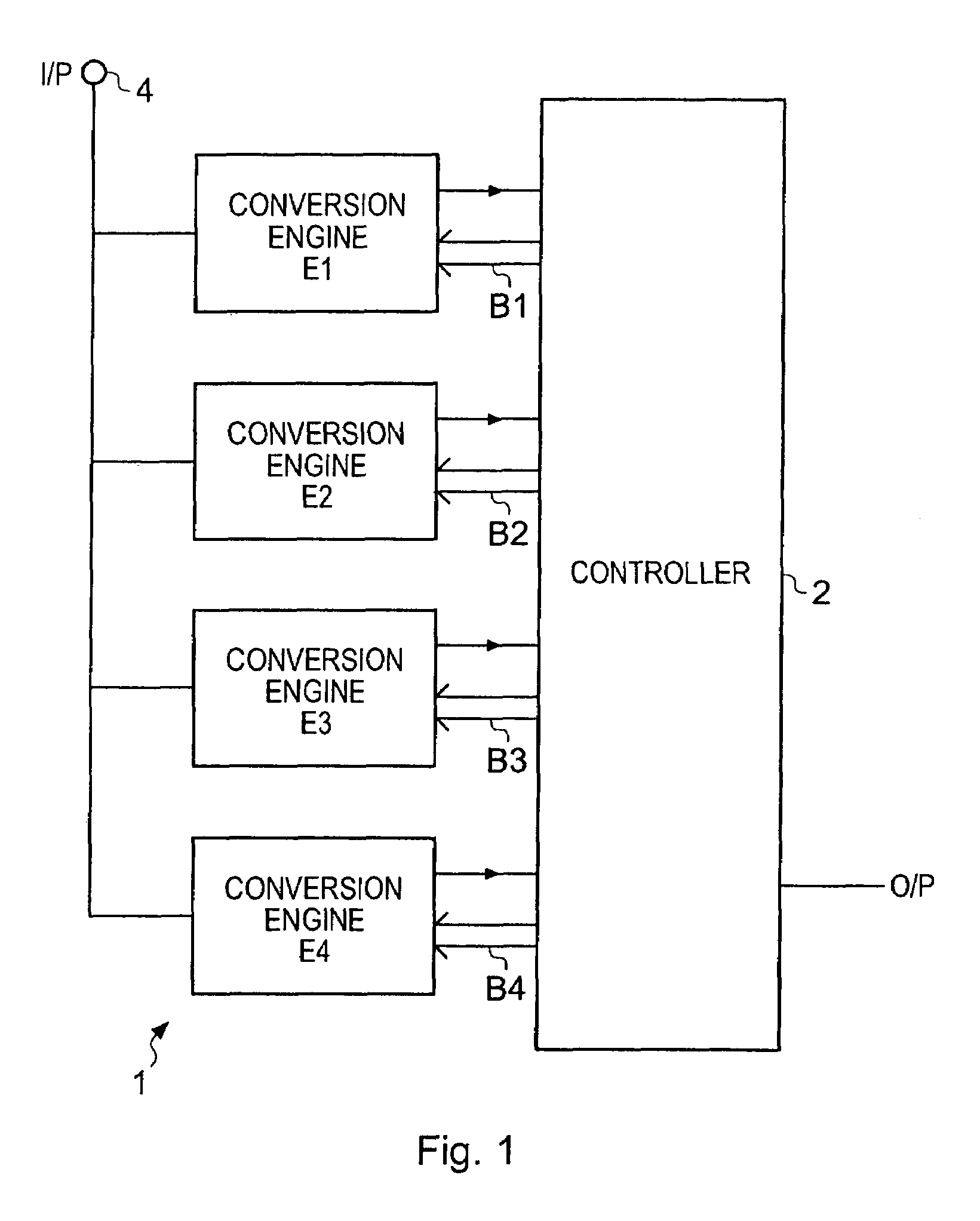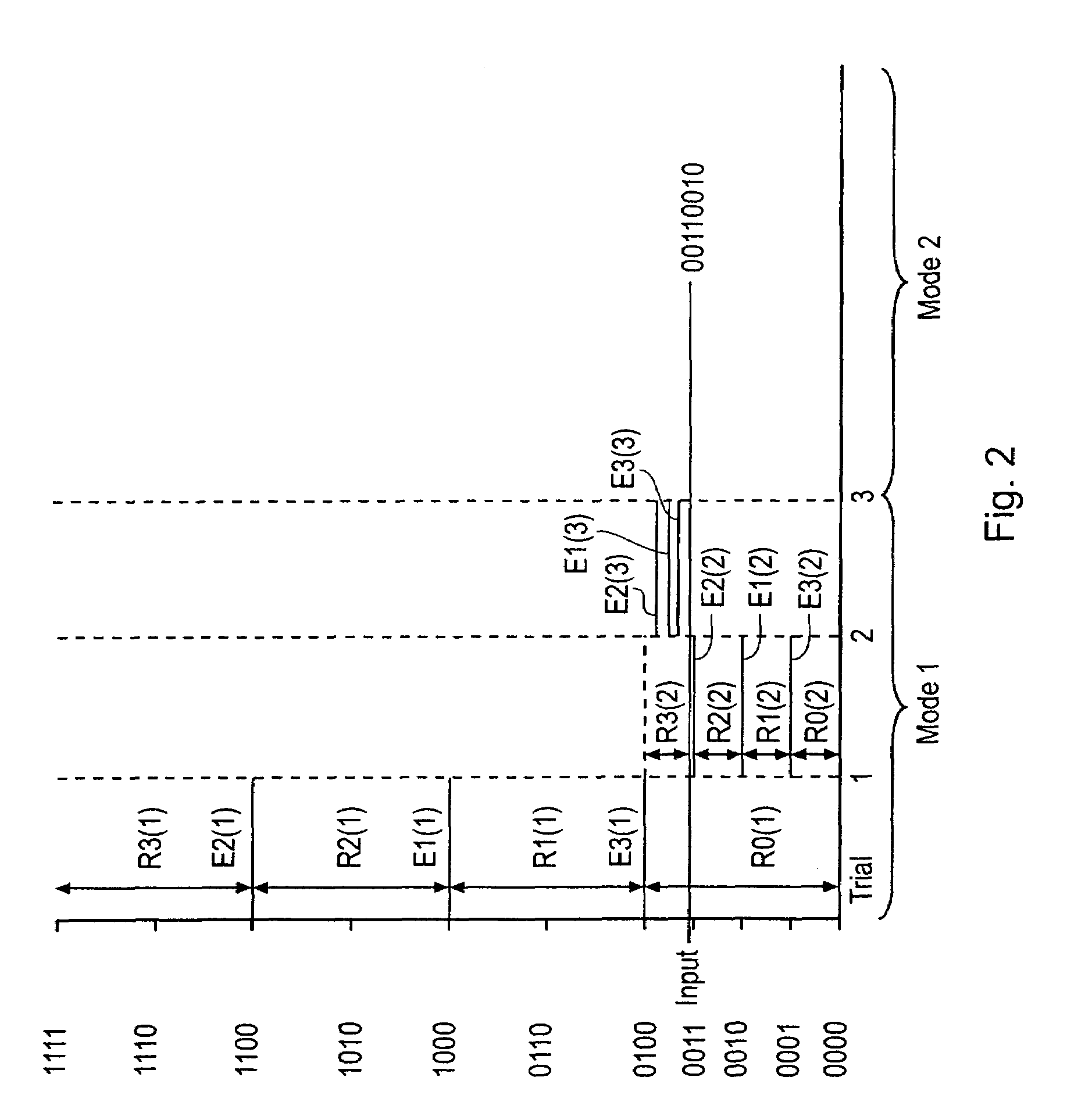Analog to digital converter
a digital converter and analog technology, applied in the field of analog to digital converters, can solve the problems of difficult to achieve, flash converters are known to provide high conversion speed, source of conversion error, increased cost, etc., and achieve the effect of increasing capacitance, reducing thermal noise on capacitors, and increasing thermal nois
- Summary
- Abstract
- Description
- Claims
- Application Information
AI Technical Summary
Benefits of technology
Problems solved by technology
Method used
Image
Examples
Embodiment Construction
[0046]FIG. 1 schematically illustrates a successive approximation analog to digital converter, generally labelled 1, constituting an embodiment of the present invention. The converter comprises a plurality of analog to digital conversion engines which, advantageously, are switched capacitor analog to digital converters having the occasional redundant capacitor. These redundant capacitors are additional to the normal binary weighted bits and provide some correction of errors made in previous bit trials. Three conversion engines labelled E1, E2 and E3 are provided, although in a preferred embodiment of the present invention a fourth engine labelled E4 is also provided. Each of the engines E1 to E4 is in communication with a controller generally designated 2 which receives an output from a comparator provided internally within each of the conversion engines E1 to E4, and which also has a control bus designated B1 to B4 for controlling the switches associated with each of the capacitors...
PUM
 Login to View More
Login to View More Abstract
Description
Claims
Application Information
 Login to View More
Login to View More - R&D
- Intellectual Property
- Life Sciences
- Materials
- Tech Scout
- Unparalleled Data Quality
- Higher Quality Content
- 60% Fewer Hallucinations
Browse by: Latest US Patents, China's latest patents, Technical Efficacy Thesaurus, Application Domain, Technology Topic, Popular Technical Reports.
© 2025 PatSnap. All rights reserved.Legal|Privacy policy|Modern Slavery Act Transparency Statement|Sitemap|About US| Contact US: help@patsnap.com



